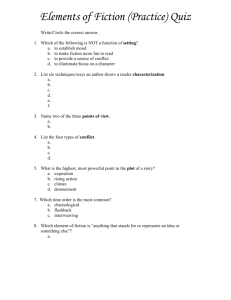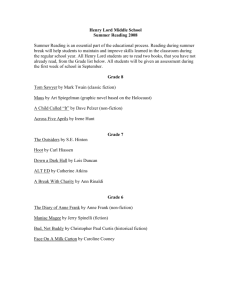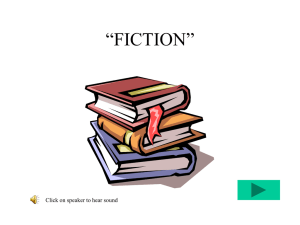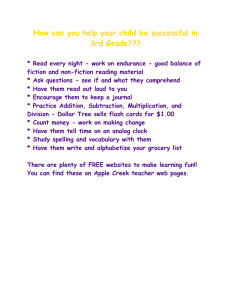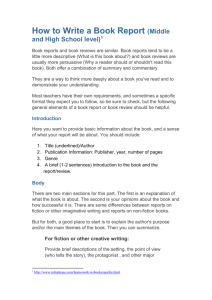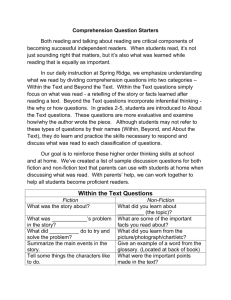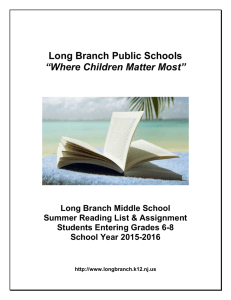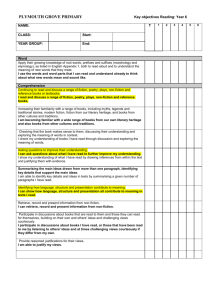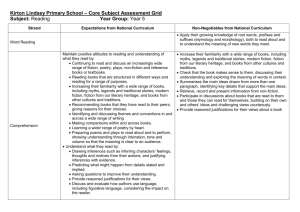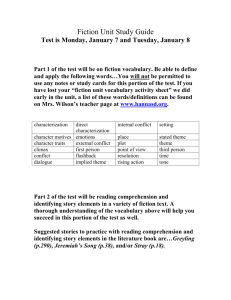Fiction vs Non fiction notes
advertisement
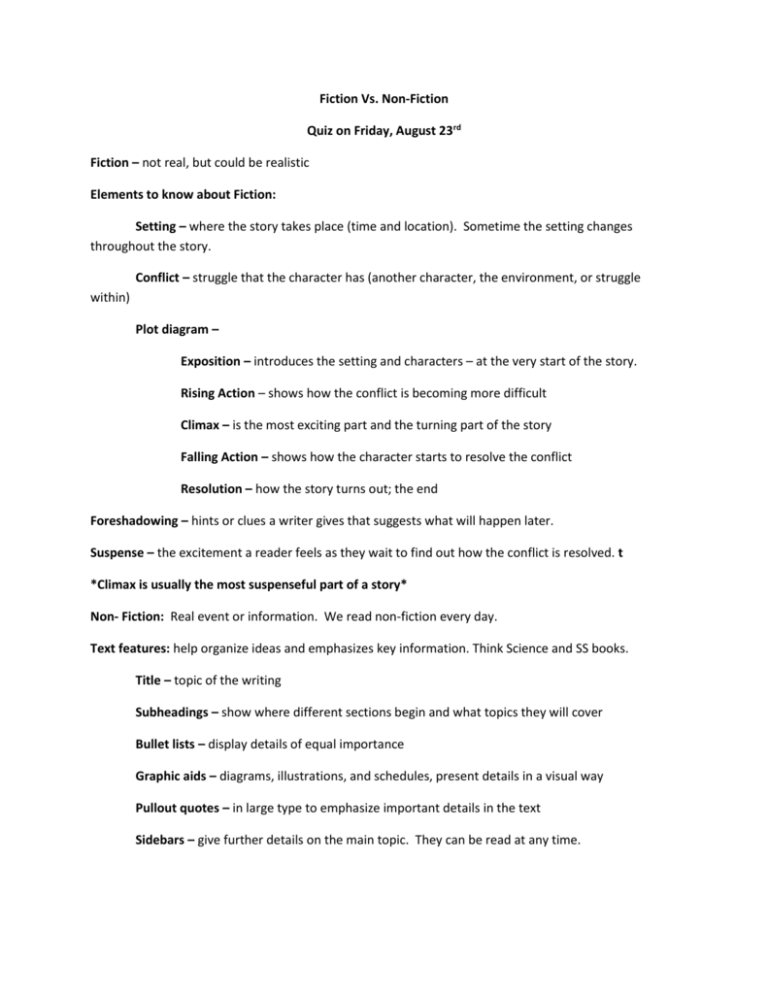
Fiction Vs. Non-Fiction Quiz on Friday, August 23rd Fiction – not real, but could be realistic Elements to know about Fiction: Setting – where the story takes place (time and location). Sometime the setting changes throughout the story. Conflict – struggle that the character has (another character, the environment, or struggle within) Plot diagram – Exposition – introduces the setting and characters – at the very start of the story. Rising Action – shows how the conflict is becoming more difficult Climax – is the most exciting part and the turning part of the story Falling Action – shows how the character starts to resolve the conflict Resolution – how the story turns out; the end Foreshadowing – hints or clues a writer gives that suggests what will happen later. Suspense – the excitement a reader feels as they wait to find out how the conflict is resolved. t *Climax is usually the most suspenseful part of a story* Non- Fiction: Real event or information. We read non-fiction every day. Text features: help organize ideas and emphasizes key information. Think Science and SS books. Title – topic of the writing Subheadings – show where different sections begin and what topics they will cover Bullet lists – display details of equal importance Graphic aids – diagrams, illustrations, and schedules, present details in a visual way Pullout quotes – in large type to emphasize important details in the text Sidebars – give further details on the main topic. They can be read at any time.
